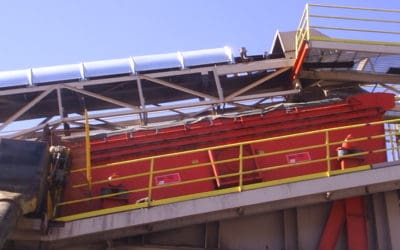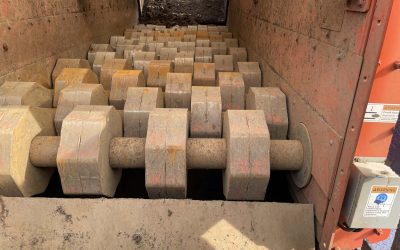Reprocessing construction and demolition (C&D) waste is crucial in promoting environmental sustainability and conserving valuable resources. However, the construction industry faces a variety of challenges in effectively recycling C&D waste.
In this article, we’ll explore these challenges and discuss strategies for maximizing resource recovery and reducing waste sent to landfills.
Identifying Key Challenges in C&D Recycling
- Contamination Management
- Transportation Costs
- Lack of Infrastructure
- Market Demand
- Regulatory Barriers
Contamination Management
Construction and demolition waste streams often contain a mix of materials. That includes both recyclable C&D waste and non-recyclable items, such as dirt, debris, and hazardous substances (like asbestos, lead-based paints, chemical solvents, and mercury).
It’s important to educate workers on the types of materials that are recyclable and best practices for separating them out. On-site sorting practices as well as quality control checks can help minimize contamination in C&D waste streams and reduce the number of trips required for transportation. Plus, technology (like sensor-based sorting and C&D waste screening equipment) help make the process more efficient and accurate.
Transportation Costs
The high cost of hauling C&D waste to recycling facilities or landfills can be a significant barrier to recycling, especially if facilities are located far away. Because C&D waste is often bulky and heavy, specialized vehicles are often required for transportation.
Optimizing transportation routes and maximizing vehicle capacity can help minimize transportation costs. Companies may be able to build partnerships with nearby recycling facilities or collaborate with other construction projects or contractors in the area to consolidate transportation efforts.
Lack of Infrastructure
Limited availability of properly equipped recycling facilities, sorting centers, and processing plants presents a major obstacle. In some areas, there may be a lack of recycling infrastructure altogether, making it difficult to recycle C&D debris.
Government entities, private investors, and industry stakeholders can collaborate to invest in the development of new recycling facilities, expanding sorting and processing capacity to handle the growing volumes of C&D materials. Or, existing facilities can be expanded and upgraded with additional storage capacity, processing machinery, and sorting equipment.
The BIVITEC and Freedom Disc Screen are both great for C&D material sorting.
Market Demand
Fluctuations in market demand for these materials (due to changes in construction activity and economic conditions) can impact the viability of C&D waste recycling. If there is limited demand for recycled materials, recyclers may struggle to find buyers for their products, leading to stockpiling or disposal of recyclable materials.
End users of recycled materials often have specific quality requirements that must be met for their applications. Plus, recycled materials have to compete with virgin materials that may be cheaper, more readily available, and quality assured.
Educating consumers, contractors, and end users about the benefits of using recycled materials can help increase demand for recycled products. Diversifying the end markets for these materials may involve identifying new industries or applications that can utilize recycled materials and developing partnerships with potential end users.
Additionally, governments can help stimulate demand for recycled materials by:
- Implementing procurement policies that prioritize the use of recycled products in public construction projects
- Establishing green building standards and certification programs
- Providing financial incentives (such as tax credits, grants, or subsidies) to companies that use recycled materials
Regulatory Barriers
Complex and often inconsistent regulatory requirements related to waste management, permitting, and disposal can also pose challenges. Compliance with environmental regulations and obtaining necessary permits can be time-consuming and costly for contractors and recyclers. Plus, recycling facilities can be affected by zoning regulations and land use policies.
To address these challenges, governments can streamline regulations, providing clearer guidelines and standardized processes. Offering regulatory assistance and incentives can alleviate compliance burdens and stimulate investment in recycling infrastructure.
Industry associations, advocacy groups, and environmental organizations can advocate for policy reform to address regulatory barriers and promote a supportive regulatory environment for C&D recycling.
Overcoming challenges in construction and demolition waste recycling requires a concerted effort from governments, industry stakeholders, and advocacy groups. While numerous obstacles exist, there are also ample opportunities for innovation and progress, helping create a cleaner, greener, and more prosperous society.
Read more about C&D Recycling:


